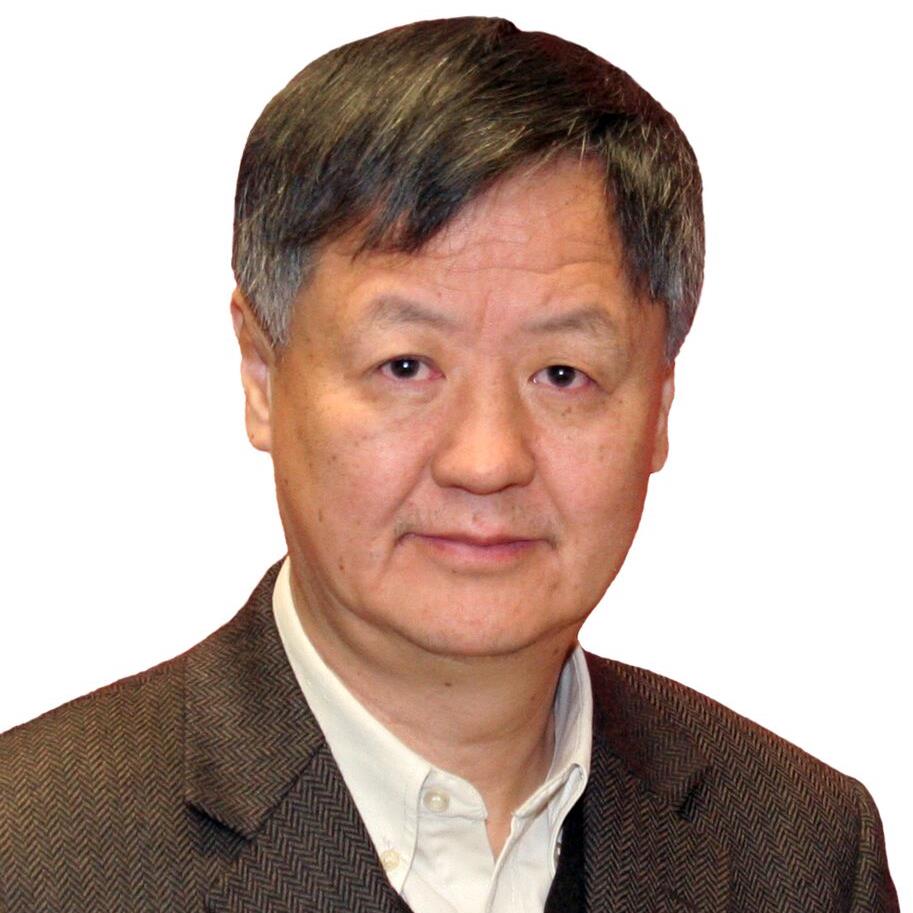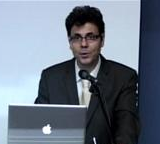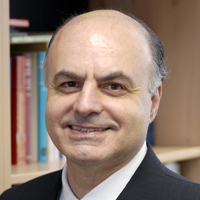Keynote 1:
Collaborative Neurodynamic Optimization: Biologically and Socially Plausible Approaches to Distributed, Global and Multiple-objective Optimization
Prof. Jun Wang (IEEE Fellow)
City University of Hong Kong, Hong Kong
Abstract: The past three decades witnessed the birth and growth of neurodynamic optimization which has emerged and matured as a powerful approach to real-time optimization due to its inherent nature of parallel and distributed information processing and the hardware realizability. Despite the success, almost all existing neurodynamic approaches work well only for convex and generalized-convex optimization problems with unimodal objective functions. Effective neurodynamic approach to constrained global optimization with multimodal objective functions is rarely available. In this talk, starting with the idea and motivation of neurodynamic optimization, I will review the historic review and present the state of the art of neurodynamic optimization with many individual models for convex and generalized convex optimization. In addition, I will present a multiple-time-scale neurodynamic approach to selected constrained optimization. Finally, I will introduce population-based collaborative neurodynamic approaches to constrained distributed and global optimization. By deploying a population of individual neurodynamic models with diversified initial states at a lower level coordinated by using some global search and information exchange rules (such as PSO or DE) at a upper level, it will be shown that distributed, global, and multi-objective optimization problems can be solved effectively and efficiently.
Biography of Prof. Jun Wang

Jun Wang is a Chair Professor of Computational Intelligence in the Department of Computer Science at City University of Hong Kong. Prior to this position, he held various academic positions at Dalian University of Technology, Case Western Reserve University, University of North Dakota, and Chinese University of Hong Kong. He also held various part-time visiting positions at US Air Force Armstrong Laboratory, RIKEN Brain Science Institute, Huazhong University of Science and Technology, Dalian University of Technology, and Shanghai Jiao Tong University as a Changjiang Chair Professor. He received a B.S. degree in electrical engineering and an M.S. degree in systems engineering from Dalian University of Technology, Dalian, China. He received his Ph.D. degree in systems engineering from Case Western Reserve University, Cleveland, Ohio, USA. His current research interests include neural networks and their applications. He published about 200 journal papers, 15 book chapters, 11 edited books, and numerous conference papers in these areas. He is the Editor-in-Chief of the IEEE Transactions on Cybernetics. He also served as an Associate Editor of the IEEE Transactions on Neural Networks (1999-2009), IEEE Transactions on Cybernetics and its predecessor (2003-2013), and IEEE Transactions on Systems, Man, and Cybernetics – Part C (2002–2005), as a member of the editorial advisory board of International Journal of Neural Systems (2006-2013), and a member of the editorial board of Neural Networks (2012-2014) as a guest editor of special issues of European Journal of Operational Research (1996), International Journal of Neural Systems (2007), Neurocomputing (2008, 2014, 2016), and International Journal of Fuzzy Systems (2010, 2011). He was an organizer of several international conferences such as the General Chair of the 13th International Conference on Neural Information Processing (2006) and the 2008 IEEE World Congress on Computational Intelligence, and a Program Chair of the IEEE International Conference on Systems, Man, and Cybernetics (2012). He has been an IEEE Computational Intelligence Society Distinguished Lecturer (2010-2012, 2014-2016). In addition, he served as President of Asia Pacific Neural Network Assembly (APNNA) in 2006 and many organizations such as IEEE Fellow Committee (2011-2012); IEEE Computational Intelligence Society Awards Committee (2008, 2012, 2014), IEEE Systems, Man, and Cybernetics Society Board of Directors (2013-2015), He is an IEEE Fellow, IAPR Fellow, and a recipient of an IEEE Transactions on Neural Networks Outstanding Paper Award and APNNA Outstanding Achievement Award in 2011, Natural Science Awards from Shanghai Municipal Government (2009) and Ministry of Education of China (2011), and Neural Networks Pioneer Award from IEEE Computational Intelligence Society (2014), among others.
Keynote 2:
Distributed Algorithms for Estimation and Inference in Discrete Event Systems: Implications to Diagnosability and Opacity
Prof. Christoforos Hadjicostis
University of Cyprus, Cyprus
Abstract: Discrete event systems (DES) are event-driven systems whose state evolutions are determined by occurrences of asynchronous events. Examples include a variety of systems from domains as diverse as transportation, automated manufacturing, process control, communication and networking, security protocols, and others. This talk discusses the recursive algorithms for state estimation and event inference in DES, which are key tasks for proper monitoring and control of such systems, as well as the verification of properties of interest, such as diagnosability and opacity. The verification of such properties becomes even more challenging in emerging distributed settings where there may exist multiple interacting systems and multiple monitors, with diverse (and possibly unreliable) observation and communication capabilities. The talk discusses recent progress on distributed state estimation and event inference in emerging interconnected DES, as well as efficient ways for verifying properties of interest, such as diagnosability (i.e., the ability to detect within finite time the occurrence/type of a fault) and opacity (i.e., the guarantee that outsiders will never be able to infer that the system lies within a certain of certain secret/critical states).
Biography of Prof. Christoforos Hadjicostis

Christoforos Hadjicostis is Professor of Electrical and Computer Engineering at the University of Cyprus. He received S.B. degrees in Electrical Engineering, Computer Science and Engineering, and Mathematics, the M.Eng. degree in Electrical Engineering and Computer Science, and the Ph.D. degree in Electrical Engineering and Computer Science, all from the Massachusetts Institute of Technology, Cambridge, MA. From 1999 to 2007, he was Assistant and then Associate Professor with the Department of Electrical and Computer Engineering at the University of Illinois at Urbana-Champaign. Since 2007, he has been with the University of Cyprus, where he has served as Chair of the Department of Electrical and Computer Engineering and Dean of Engineering. His research focuses on fault diagnosis and tolerance in distributed dynamic systems; error control coding; monitoring, diagnosis and control of large-scale discrete event systems; and related applications in embedded systems, distributed robotics, anomaly detection and network security. His work has been funded via several competitive grants from the National Science Foundation (including an NSF Career Award), the Air Force Office of Scientific Research, the European Commission (including a Marie Curie International Reintegration Grant), Qatar Foundation, the Cyprus Research Promotion Foundation, and companies like Boeing, Motorola, and Lucent. Dr. Hadjicostis has served or is serving on the Editorial Board of IEEE Transactions on Automatic Control, IEEE Transactions on Automation Science and Engineering, IEEE Transactions on Circuits and Systems (Part I), IEEE Transactions on Control Systems Technology, and International Journal of Discrete Event Dynamic Systems.
Keynote 3:
Model Builder for Supervision System Design
Prof. Belkacem Ould Bouamama
Lille University, France
Abstract: Supervision systems include a set of tools and methods for the control of industrial processes in normal working conditions as well as in the presence of failures. The main activities addressed by supervision systems are fault detection and Isolation (FDI), and decision making for fault accommodation or system reconfiguration. The system modelling is an important and difficult step in FDI design. Main issues of supervision systems design before industrial realization, can be summarized mainly as follows: how to generate automatically a formal dynamic model and fault indicators of complex industrial continuous and hybrid systems? How to perform structural detectability and isolability performances without any need of numerical calculation before industrial design, and how to propose the optimal instrumentation architecture? Such are the questions we want to contribute from and discuss during this keynote from an industrial and theoretical point of view.
The speech, based on the validated research results obtained in recent years, will be illustrated by a developed software named “ModBuild” and industrial applications. Theory behind “Modbuild” is based on conventional and Hybrid Bond graphs allowing because of their causal, behavioral and structural properties to use only one model valid for all modes representing hybrid systems not only for modelling but also diagnosis. Applications to complex coupled thermofluidic industrial illustrates this theory.
The software automatically (because of the graphical aspect of the bond graph) creates complex process dynamic models from a simple graphical interface, where system components can be dragged from a component data base and interconnected so as to produce the overall system, following the Piping and Instrumentation Diagram. Once the model has been created, “ModBuild” checks its consistency and performs its structural analysis in order to automatically determine the diagnosis algorithms which should be implemented, and their fault detectability and isolability performances. The friendly graphical user interface allows to test several sensor configurations in order to optimize the diagnostic possibilities.
Biography of Prof. Belkacem Ould Bouamama

Belkacem OULD BOUAMAMA is full Professor of exceptional class and head of the research at "Ecole Polytechnique de Lille, France". His main research areas developed at CRIStAL laboratory CNRS9189 where he leads “MOCIS” group, concern Integrated Design for Supervision of System Engineering. Their application domains are mainly intelligent transport, energy, and mechatronic systems. He is the author of more than one hundred international publications in this domain. He is co-author of five books in bond graph modeling and Fault Detection and Isolation area. Research and teaching activities can be consulted at: https://wikis.univ-lille1.fr/ci2s/membres/belkacem-ould-bouamama
Keynote 4:
Active Magnetic Bearings for Smart Rotating Machinery
Prof. M. Necip Sahinkaya
Kingston University, UK
Abstract: Active Magnetic Bearings (AMBs) provide contact-free rotor levitation and have many advantages over conventional bearings. These include lubrication-free frictionless operation. They can operate at high speeds, in a vacuum, andare highly robust allowing them operate in hostile environments with littlemaintenance. AMB control electronics incorporate processors, which can be utilized both to implement advanced control techniques and also to monitor the plant in order to detect and compensate for faults. Thus, AMBs are key components in the design of smart machines. Smart machines have been described as part of a ‘new wave’ of technology, but in the area of rotating machinery that wave has been progressing for over a decade. The talk will concentrate on how magnetic bearings have played a central part in this evolutionary development in machine design, and progress made in the design of smart machinery in terms of modelling, identification, and control, coupled with on-line diagnostics. A key factor is the ability to automatically reconfigure a machine when a fault has been diagnosed or when changes in operational conditions have been detected. Developments in these areas will be described and case studies from Sahinkaya’s work spanning over 25 years will be presented. Smart, self-adaptive rotating machinery is still rapidly developing area of technology and the final stage is not yet complete.The talk will include discussions on how further developments and future work arising from research in these areas can lead to increased capability of smart machines.
Biography of Prof. M. Necip Sahinkaya

M. Necip Sahinkaya is a Professor of Mechanical Engineering. He received his doctorate in 1979 (University of Sussex). Following periods at the Universities of Sussex, Strathclyde and Bath, he moved to industry in 1988. He rejoined the University of Bath in 2000 as a Reader in Mechanical Engineering, and then moved to Kingston University London in 2013 as a Professor of Mechanical Engineering. He is Fellow of IMechE and Editor-in-Chief for the IMechE Proceedings Part I. He was Chair of the Organising Committee for the UKACC Control 2004 conference. He has experience in developing interdisciplinary research and teaching activities. His research involves collaborative projects as well as individual research activity. He has made seminal contributions to the study of machine systems and pioneered an open-loop adaptive control technique using magnetic bearings to control vibrations in rotating machines. His research in the dynamics and control of complex non-linear mechatronic systems has been recognised through prizes and awards. He is a member of the ISO TC108/SC2/WG7 Committee on Vibration of Active Magnetic Bearing Equipped Rotating Machinery. His research has been supported by various grants from Research Councils and industry. He has published over 120 journal and conference papers. http://www.kingston.ac.uk/staff/profile/professor-mehmet-necip-sahinkaya-24/
Keynote 5:
Towards semantic interoperability in Internet of Things and beyond
Prof. Marcin Paprzycki
Systems Research Institute, Polish Academy of Sciences Warsaw, Poland
Abstract: Lack of interoperability of Internet of Things (IoT) platforms / systems / applications (artifacts) is being recognized as an important issue that prevents faster development of IoT ecosystems (including Smart Grids / Homes / Neighborhoods, office buildings, etc.). While interoperability can be considered on many levels, in the presentation I will focus on semantic interoperability. Moreover, while originating from IoT scenarios, the proposed approach can be naturally applied outside of the Internet of Things.
Based on our recent work, we came to the conclusion that we have to assume that: (i) research should focus on joining multiple (at least three) artifacts, and (ii) existing / to be joined artifacts should not be modified (due to the resistance of stakeholders), and (iii) typically, such artifacts do not have semantics represented in the OWL language. We also have to assume that, at least for the time being, establishing interoperability will be guided by representatives of stakeholders (we thus omit considerations related to the discovery and inclusion of services “from the WWW”).
Therefore, we have propose the following approach leading towards establishing semantic interoperability: (1) Modular ontology consisting of: (a) core vocabulary (of the IoT), and (b) domain specific modules (facilitating communication concerning given “topic” – one or more modules for each “topic”) has to be developed. (2) Semantics of each artifact has to be extracted and lifted to OWL (providing foundation for semantic translations). (3) Translators (bidirectional – producer and consumer) between the “local vocabulary” and the “lifted vocabulary” have to be created. (4) Alignments (“directional”) between ontologies representing each entity, and appropriately selected modules of the central ontology have to be instantiated and stored. They will be used in data translations.
The aim of the presentation will be to provide details of the above described proposal for reaching semantic interoperability (in IoT ecosystems). Furthermore, results concerning efficiency of the proposed approach will be presented. Research presented in the talk is being supported by EU-H2020-ICT grant INTER-IoT 687283. Since the project is ongoing, subsequent publications materialize (as technical reports) at: http://www.ibspan.waw.pl/~paprzyck/mp/cvr/research/IoT.html
Biography of Prof. Marcin Paprzycki

Marcin Paprzycki is an associate professor at the Systems Research Institute, Polish Academy of Sciences. He has an MS from Adam Mickiewicz University in Poznań, Poland, a PhD from Southern Methodist University in Dallas, Texas, and a Doctor of Science from the Bulgarian Academy of Sciences. He is a senior member of IEEE, a senior member of ACM, a Senior Fulbright Lecturer, and an IEEE CS Distinguished Visitor. He has contributed to more than 450 publications and was invited to the program committees of over 500 international conferences. He is on the editorial boards of 12 journals and a book series. To reach him, please visit http://www.ibspan.waw.pl/~paprzyck/.
